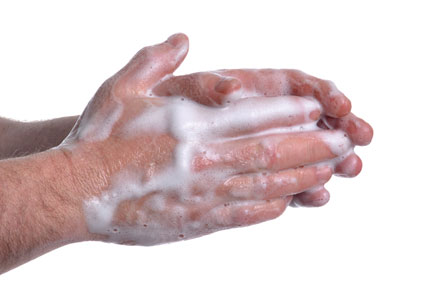Seeing beyond the glove
Facility and safety managers implicitly understand the need to protect workers’ hands from harsh chemicals, temperature extremes or hazardous materials. For most, the protection that comes immediately to mind is a good pair of gloves. Few make the link between safety issues and care of the actual hands themselves.
These hands, which might be subjected to anything from dirt and potential irritants to temperature extremes, frequent hand washing and other “wet” conditions should be the greater concern for employers. According to the U.S. Bureau of Labor Statistics, 10-15 percent of all occupational illness is caused by skin disease. Arduous working conditions can lead to skin problems ranging from chapped skin to occupational dermatitis.
The United States Centers for Disease Control and Prevention report that occupational skin disorders are one of the most common types of occupational illness, with estimated annual costs exceeding $1 billion. The CDC also estimates that up to 40 percent of workers will suffer a skin issue at some point in their working life, and that more than half of working time lost through industrial diseases is due to dermatitis.
In addition to pain, suffering and possible permanent damage, these employee skin issues result in lost productivity, increased absenteeism and possible OSHA and health and safety violations. With all this in mind, it’s clear there is a need to look beyond protective gloves to address the care of hands themselves.
Ironically, while the industrial workplace has gotten far less “dirty” over the past several decades, hand care products remain as harsh and abrasive as ever, their cleansing abilities often far surpassing the demand. Many of the messiest industrial jobs are now automated, many companies have switched to less caustic raw materials, and many “cleaner and leaner” manufacturing methods are now in place. Yet industrial hand cleaning products remain largely unchanged, exposing workers to much harsher ingredients and compounds than are necessary to get the job done. The result is a continuing cycle of hand irritation and skin disease that is both preventable and pointless.
History of hand hygiene products
The first industrial soap was introduced to the market in the 1890s, followed by industrial powdered hand soap in the early 1900s. Both were widely used and effective for cleaning, but also often highly abrasive and damaging to the skin. In addition, these early options increased the chance of spreading germs through dispensing methods that essentially meant sharing from a bucket or bulk container. Later, workers turned to a variety of harsh, home-brewed concoctions such as paraffin (kerosene), sand and petrol to remove oil and grime after a hard day’s work. But along with grime, these creative cleaning agents also removed natural oils, leading to dry, cracked skin and a high incidence of occupational dermatitis.
While the format of cleaning compounds has changed over time from the gelled kerosene of the mid-1940s to the liquid plus abrasive favored today, the cleaning ingredients have essentially remained the same; products targeted at the industrial market remain as harsh and hostile to hands as they were a generation ago. Given the changes in contemporary manufacturing and industrial environments, these products are far more powerful than they need to be. Products that combine the cleaning power of grit in gentler, non-damaging formulations are now coming to market and provide a safer choice as facility and safety managers and compliance officers search for healthy and sustainable options to protect the hands of their workforce. Keeping cost, the desire for enhanced sustainability and the need to deliver the best products for the needs of their workforce in mind, companies should take advantage of new opportunities to mitigate current problems and avoid them in the future.
New rules for hand protection
= Think beyond the glove. Use of personal protection equipment (PPE) may not always be possible, and employers should provide appropriate washing and drying facilities close to work areas whether PPE is available or not.
= Test. Conduct an assessment of current work practices including contact with substances which may represent a danger to the skin, such as harsh chemicals or abrasive materials.
= Educate. Institute staff training and communication to increase employee awareness and encourage compliance with safety regulations or recommendations.
= Look around. Evaluate and launch new products, processes, working practices or personal protective equipment (PPE), as required.
= Work a system. Introduce a Skin Safety Regimen that addresses the need to protect, cleanse, sanitize and restore skin.
= Remember that even gloved hands need protection. Studies have shown that, due to sweating and scraping against the skin, even gloved hands are susceptible to skin disease. Consider offering a barrier cream to further protect gloved hands.
= Sustainability matters. Look for USDA bio-certified and eco-accredited products to ensure minimal impact on worker hands and the environment.
= Use only what you need. Less really is more in some situations; don’t use more strength or quantity than is actually required. Foaming soaps are an excellent choice for gentle cleaning and will reduce the amount of soap used per hand wash.
The industrial workplace has changed, and safety and facility professionals need to help lead the way in updating industrial skin care and hand protection to better suit current conditions. Any investment made in effective hand protection flows right back to the bottom line, many times over. By educating yourself on this issue and exploring new options available, you can provide your employees with a happier, healthier, more sustainable and more cost-effective work environment.


